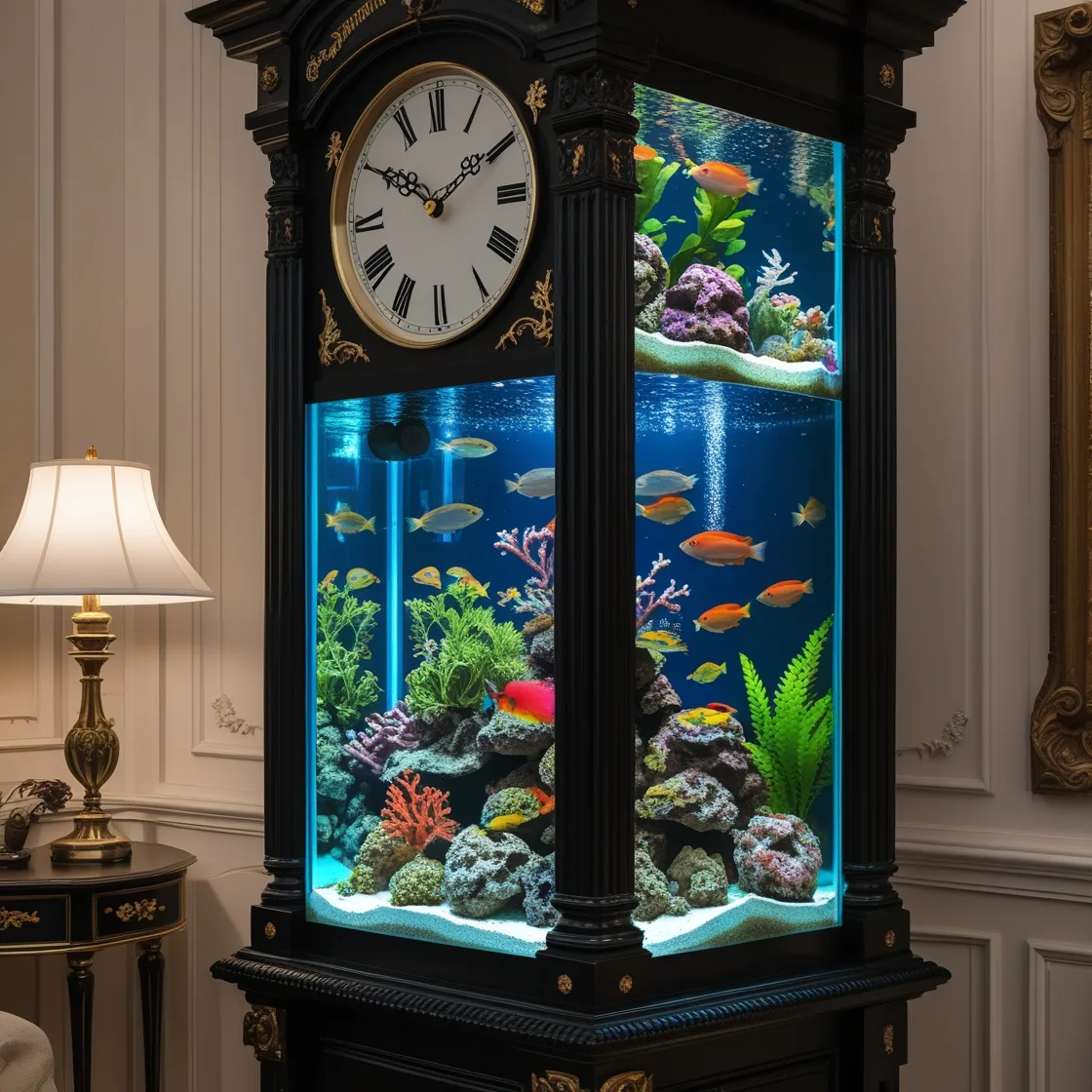When it comes to home decor, few pieces can match the timeless elegance of a grandfather clock. Its stately presence and intricate craftsmanship have made it a beloved centerpiece in homes for centuries. But what if you could combine this classic piece with the serene beauty of an aquarium? Enter the Grandfather Clock Aquarium, a stunning fusion of tradition and modernity that brings a touch of aquatic wonder to your living space.
In this blog post, we’ll explore everything you need to know about creating and maintaining a Grandfather Clock Aquarium. From the history of grandfather clocks to the steps involved in converting one into a functional fish tank, we’ll cover it all. Whether you’re a seasoned aquarist or a DIY enthusiast, this guide will inspire you to create a one-of-a-kind masterpiece.
The History of Grandfather Clocks: A Timeless Legacy
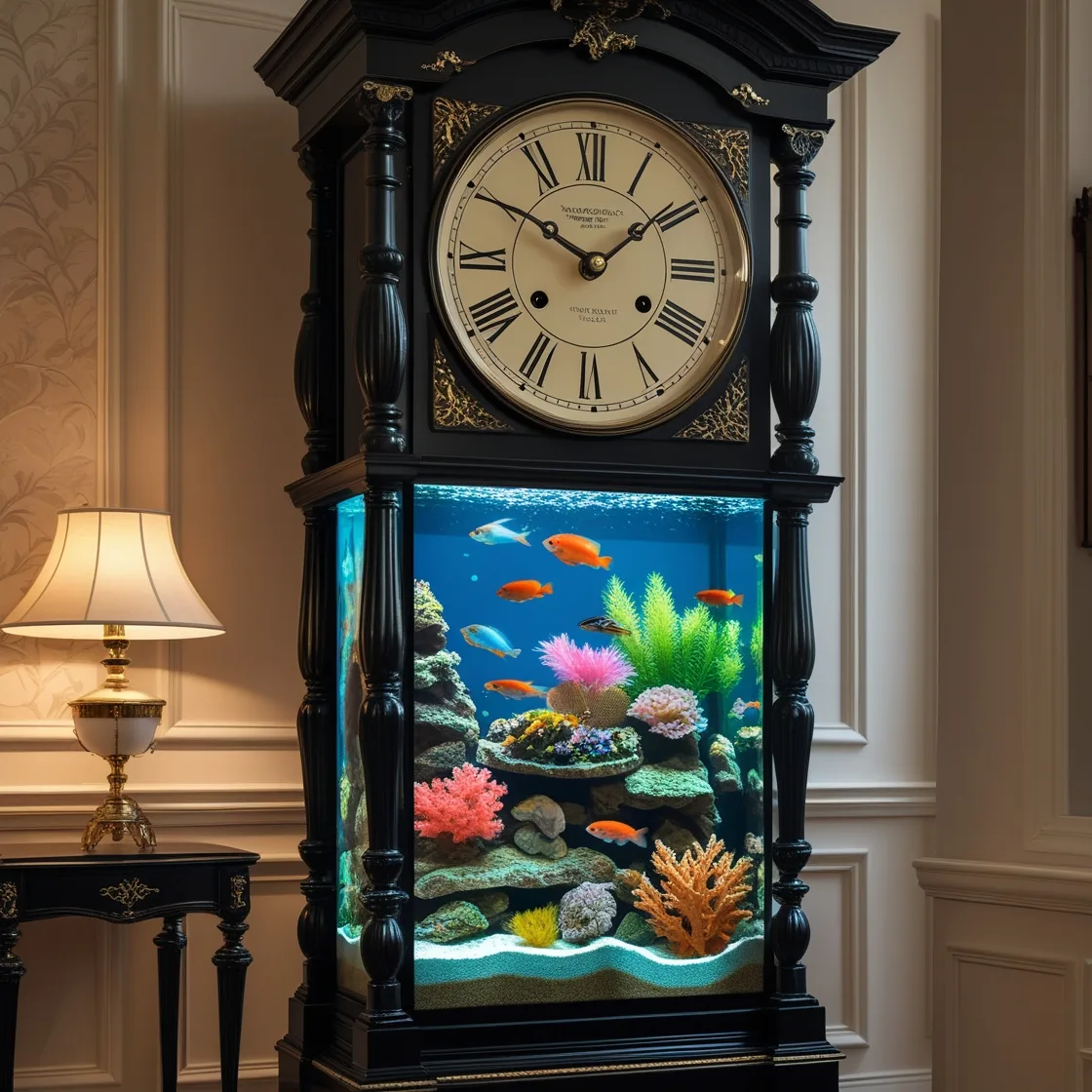
What Makes a Grandfather Clock Special?
Grandfather clocks, also known as longcase clocks, have been a symbol of sophistication and craftsmanship since their invention in the 17th century. These tall, freestanding clocks are renowned for their intricate mechanisms, melodious chimes, and ornate designs. They often serve as family heirlooms, passed down through generations.
Why Combine a Grandfather Clock with an Aquarium?
The idea of transforming a grandfather clock into an aquarium may seem unconventional, but it’s a brilliant way to breathe new life into an old or non-functional clock. By merging the clock’s classic design with the tranquil beauty of an aquarium, you create a unique piece that is both functional and visually captivating.
How to Create a Grandfather Clock Aquarium: A Step-by-Step Guide
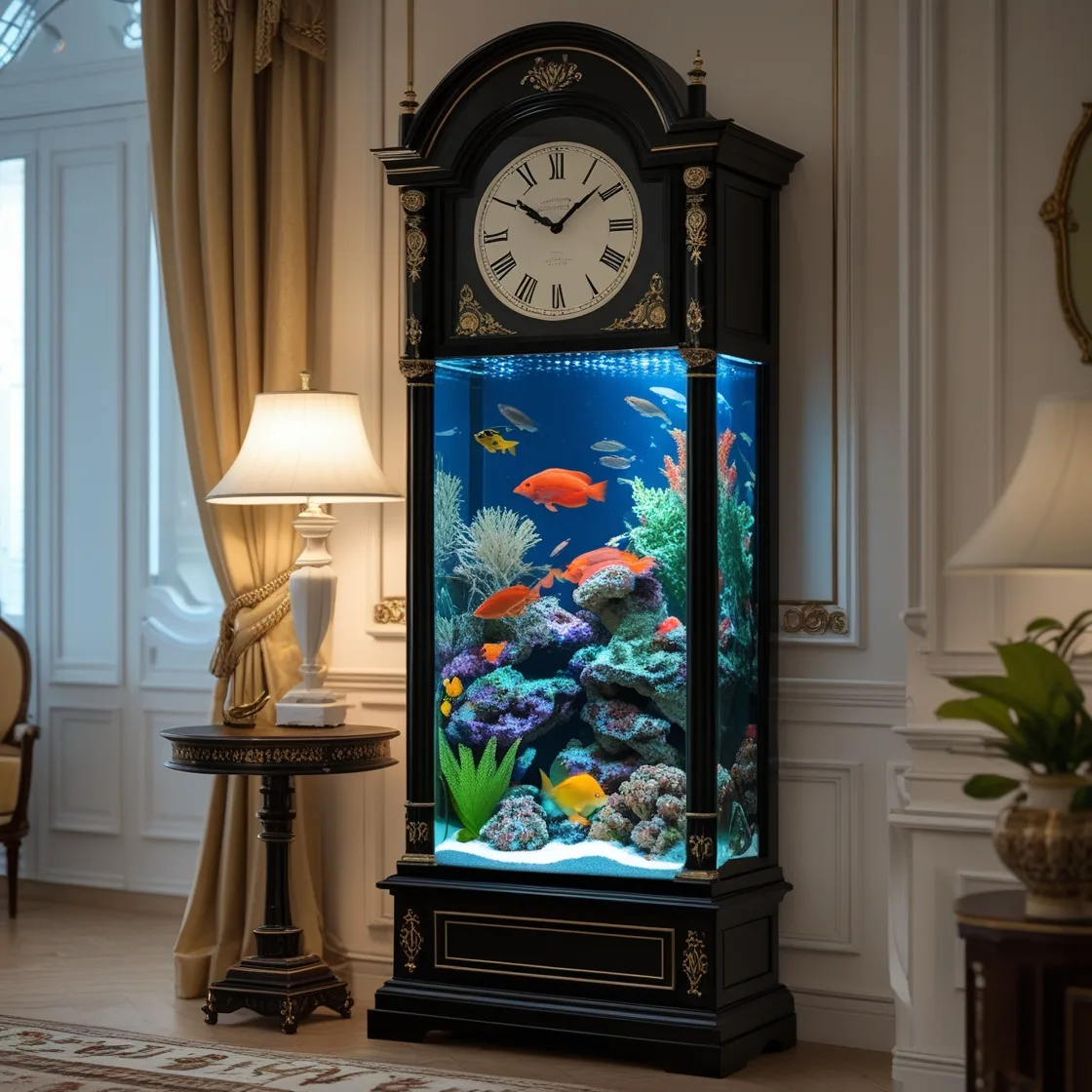
Step 1: Choosing the Right Grandfather Clock
Not all grandfather clocks are suitable for conversion. Look for a clock with a spacious interior and sturdy construction. Antique clocks with non-working mechanisms are ideal candidates, as they often have ample space for a fish tank.
Step 2: Removing the Clock Mechanism
Carefully dismantle the clock’s internal components, including the pendulum, weights, and gears. This step requires precision to avoid damaging the clock’s exterior. If you’re unsure, consult a professional clockmaker or carpenter.
Step 3: Designing the Aquarium
Measure the interior of the clock to determine the size of the aquarium. Custom glass or acrylic tanks can be designed to fit snugly inside the clock. Consider the type of fish and plants you want to include, as this will influence the tank’s dimensions and features.
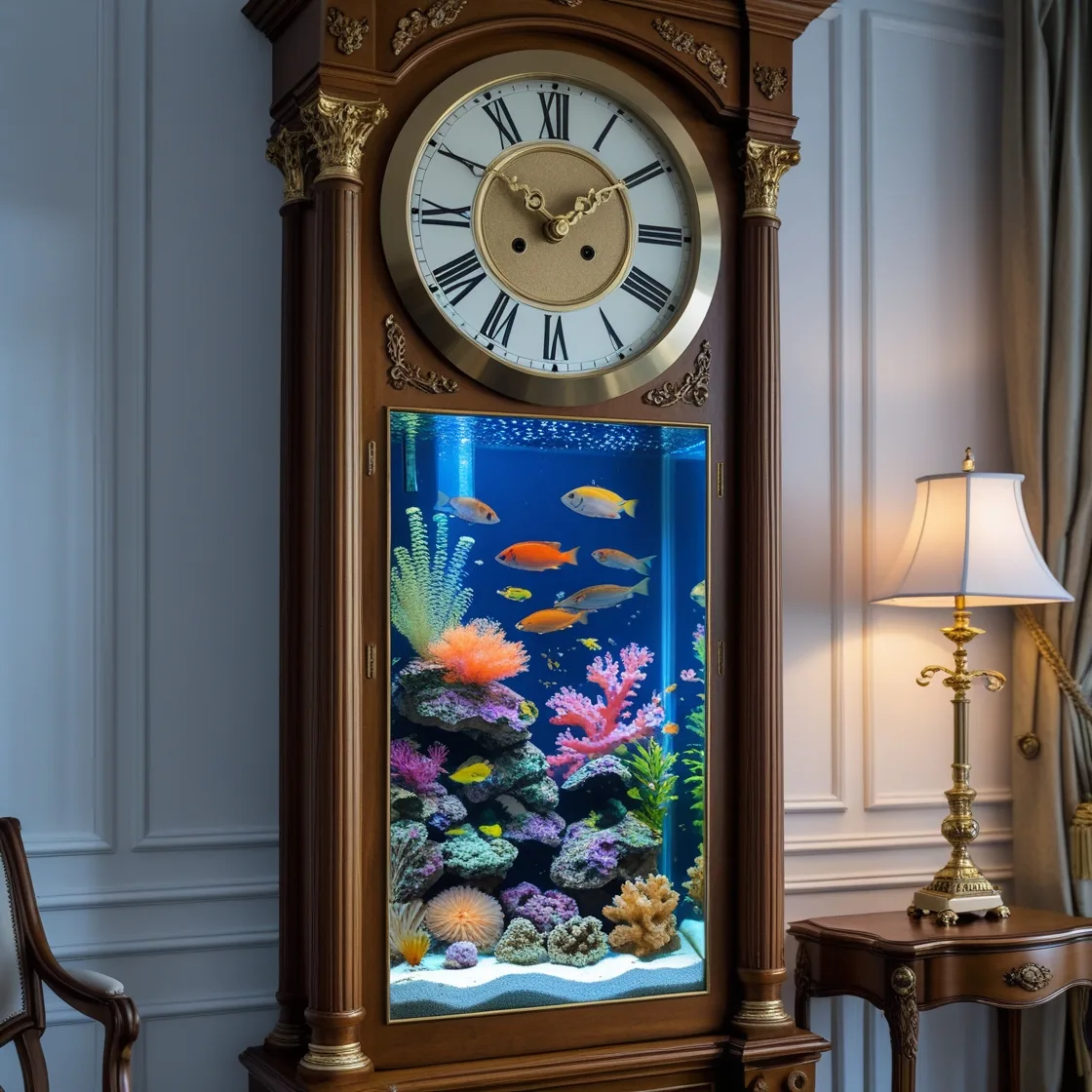
Step 4: Installing the Aquarium
Once the tank is ready, carefully place it inside the clock. Ensure that the tank is securely positioned and that all seams are properly sealed to prevent leaks. Install a filtration system, heater, and lighting to create a healthy environment for your aquatic inhabitants.
Step 5: Decorating the Aquarium
Add substrate, plants, rocks, and other decorations to create a natural underwater landscape. Choose decorations that complement the clock’s design, such as vintage-inspired ornaments or muted colors.
Step 6: Adding Fish and Final Touches
Introduce fish and other aquatic creatures to your new Grandfather Clock Aquarium. Monitor water parameters closely during the initial weeks to ensure a smooth transition. Finally, add finishing touches like a custom clock face or LED lighting to enhance the overall aesthetic.
Maintaining Your Grandfather Clock Aquarium: Tips for Longevity

Regular Cleaning and Water Changes
Like any aquarium, a Grandfather Clock Aquarium requires regular maintenance. Perform weekly water changes and clean the tank’s interior to prevent algae buildup and maintain water quality.
Monitoring Water Parameters
Use a reliable water testing kit to monitor pH, ammonia, nitrite, and nitrate levels. Keeping these parameters in check is essential for the health of your fish and plants.
Maintaining the Clock’s Exterior
While the aquarium is the focal point, don’t neglect the clock’s exterior. Dust and polish the wood regularly to preserve its luster and prevent damage.
Styling Your Grandfather Clock Aquarium: Design Ideas
Vintage Elegance
Embrace the clock’s heritage by incorporating vintage elements into your aquarium design. Use antique-style decorations, muted colors, and classic fish species like goldfish or guppies.
Modern Minimalism
For a contemporary twist, opt for a sleek, minimalist design. Use clean lines, neutral tones, and modern fish species like tetras or bettas.
Nature-Inspired Themes
Create a lush underwater garden with live plants, driftwood, and natural stones. This theme works well with community fish species and adds a touch of tranquility to your space.
Benefits of a Grandfather Clock Aquarium
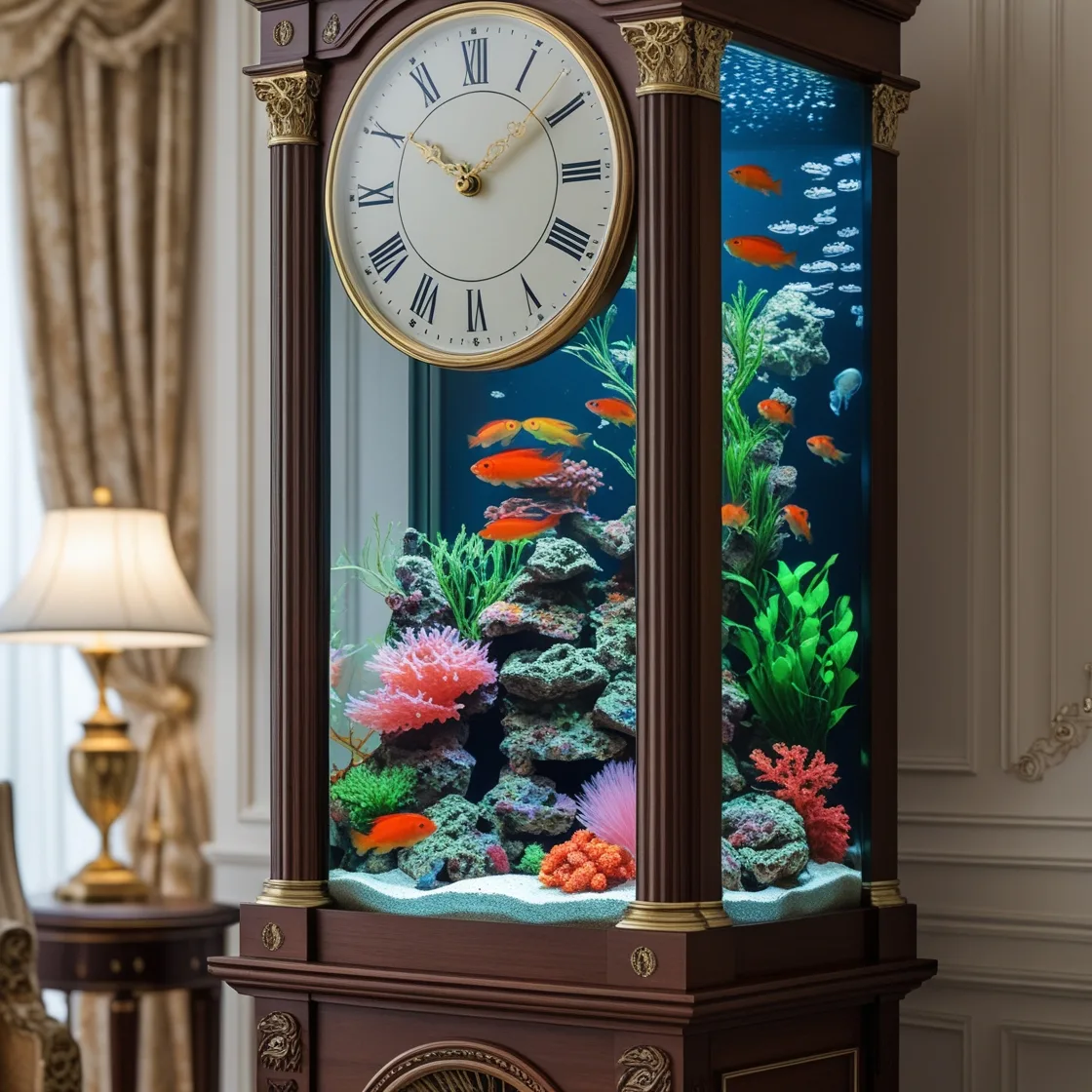
A Unique Conversation Starter
A Grandfather Clock Aquarium is sure to captivate your guests and spark conversations. Its blend of history and innovation makes it a truly unique piece.
Space-Saving Design
Unlike traditional aquariums, a Grandfather Clock Aquarium takes up minimal floor space while offering a large viewing area.
Stress Relief and Relaxation
The gentle movement of fish and the soothing sound of water can have a calming effect, making this piece a perfect addition to your home or office.
Creative Themes for Your Grandfather Clock Aquarium
Rustic Charm
If your grandfather clock has a weathered or antique finish, embrace its rustic appeal. Use natural elements like driftwood, river rocks, and moss to create a woodland-inspired aquarium. Pair this with hardy fish like danios or barbs for a low-maintenance setup.
Tropical Paradise
Transform your Grandfather Clock Aquarium into a vibrant tropical oasis. Use colorful gravel, artificial corals, and bright plants like Amazon swords or Java ferns. Add tropical fish such as angelfish, neon tetras, or dwarf gouramis to complete the look.
Zen Garden
For a calming and minimalist design, create a Zen-inspired aquarium. Use smooth stones, sand, and a few carefully placed plants like anubias or bamboo. A single betta fish or a small school of white cloud minnows can add life to this serene setup.
Fairy Tale Fantasy
Let your imagination run wild with a fairy tale-themed aquarium. Add whimsical decorations like miniature castles, treasure chests, or glowing LED mushrooms. Pair this with colorful fish like guppies or platies for a magical touch.
Practical Tips for a Successful Grandfather Clock Aquarium
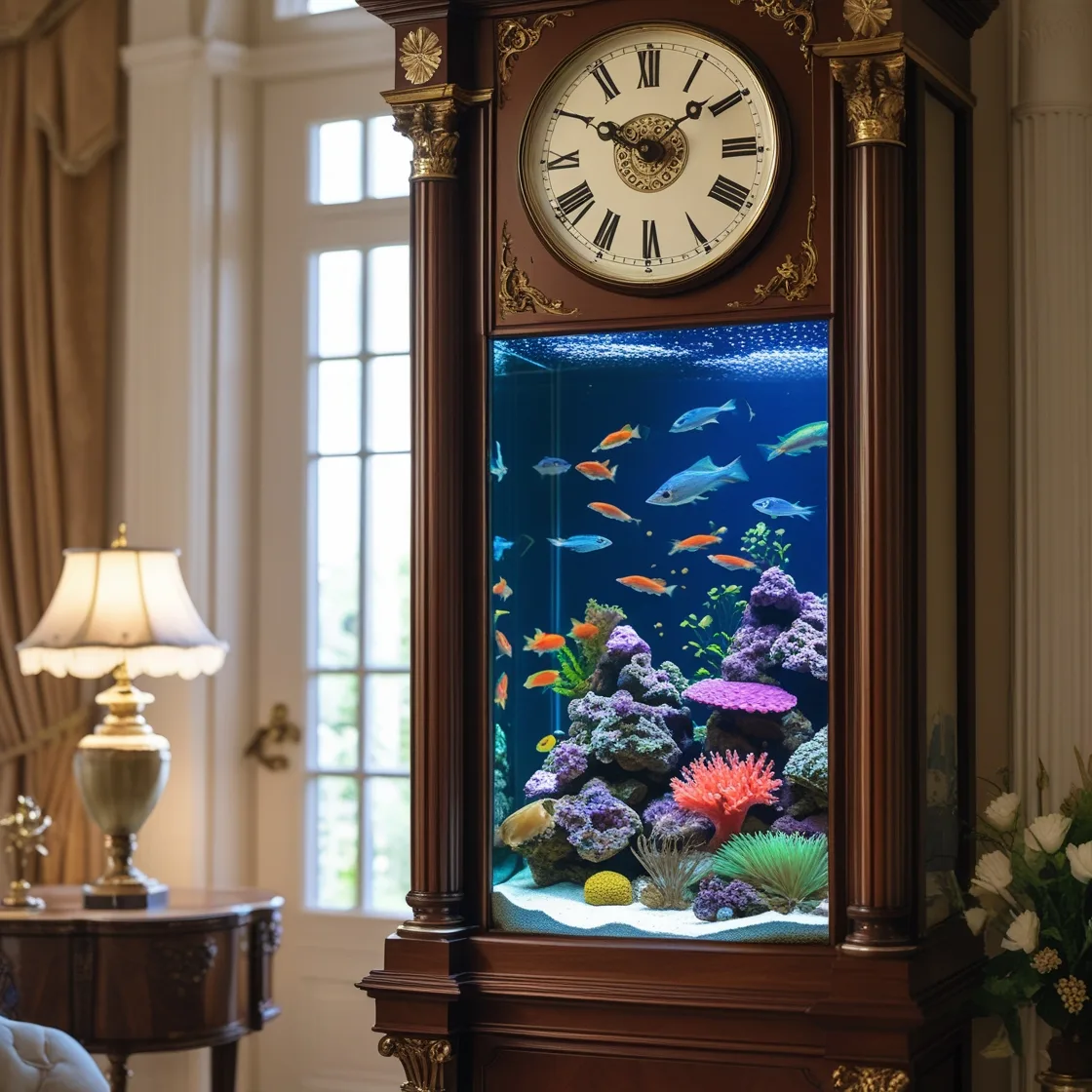
Choosing the Right Fish
When selecting fish for your Grandfather Clock Aquarium, consider the tank’s size and environment. Smaller fish like tetras, rasboras, or shrimp are ideal for compact setups. Avoid large or aggressive species that may outgrow the tank or disrupt the ecosystem.
Lighting and Temperature Control
Proper lighting is essential for both the aquarium and the clock’s aesthetic. Use LED lights that mimic natural daylight and highlight the tank’s features. Additionally, invest in a reliable heater and thermometer to maintain a stable temperature for your fish.
Soundproofing the Clock
If your grandfather clock still has a working chime mechanism, consider soundproofing the interior to prevent noise from disturbing your fish. Use foam or insulation to dampen vibrations and create a peaceful environment.
Accessibility for Maintenance
Ensure that the aquarium is easily accessible for cleaning and maintenance. Design the tank with removable panels or doors to simplify water changes, filter replacements, and other tasks.
Inspirational Stories: Grandfather Clock Aquariums Around the World

The Vintage Collector’s Masterpiece
One enthusiast in England transformed a 19th-century grandfather clock into a stunning aquarium. The clock’s intricate carvings and mahogany finish were preserved, while the interior housed a thriving community of guppies and shrimp. The project took six months to complete but became a cherished family heirloom.
The Modern Art Installation
In New York City, an artist converted a non-functional grandfather clock into a contemporary aquarium. The clock’s face was replaced with a custom glass panel, revealing a minimalist tank with black sand, white rocks, and a single betta fish. The piece was displayed in a gallery and received rave reviews for its innovative design.
The DIY Enthusiast’s Dream
A couple in Australia turned their passion for DIY projects into a Grandfather Clock Aquarium business. They source old clocks, restore them, and customize aquariums to fit. Their creations have become popular among homeowners looking for unique decor pieces.
The Environmental Impact of a Grandfather Clock Aquarium
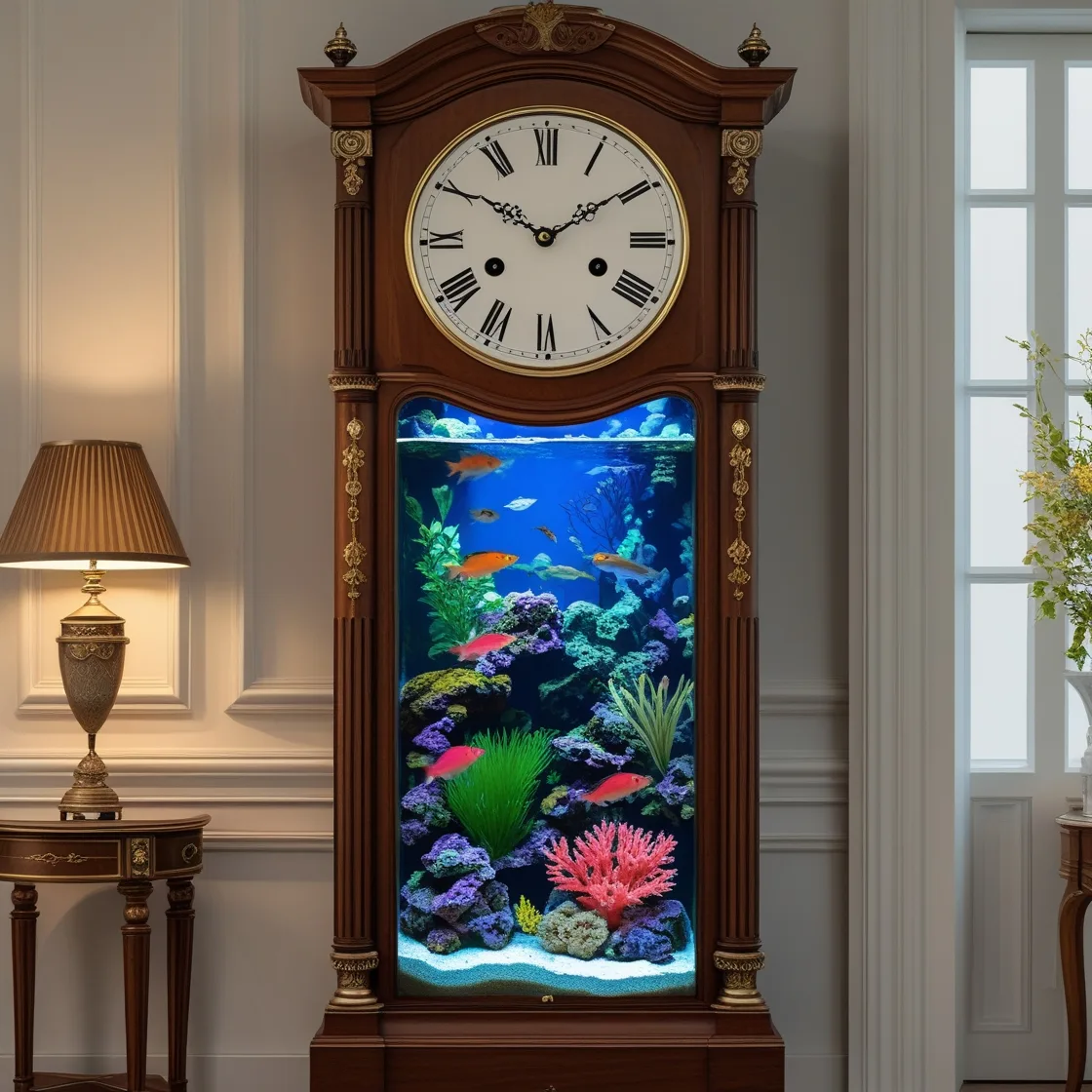
Upcycling Old Clocks
By repurposing an old or non-functional grandfather clock, you’re contributing to sustainability. Upcycling reduces waste and gives new life to items that might otherwise be discarded.
Eco-Friendly Aquarium Practices
Choose energy-efficient equipment like LED lights and low-power filters. Use live plants to improve water quality and reduce the need for chemical treatments.
Supporting Local Craftsmen
If you’re not a DIY expert, consider hiring a local carpenter or aquarium specialist to help with the project. This supports small businesses and ensures a high-quality result.
Why a Grandfather Clock Aquarium is Worth the Effort
Creating a Grandfather Clock Aquarium is more than just a DIY project—it’s a labor of love that combines artistry, craftsmanship, and a passion for aquatic life. This unique piece not only enhances your home’s decor but also serves as a testament to your creativity and dedication.
Whether you’re a seasoned aquarist or a beginner, the Grandfather Clock Aquarium offers endless opportunities for customization and personalization. From vintage-inspired designs to modern masterpieces, the possibilities are limited only by your imagination.
So, take the plunge and embark on this rewarding journey. With careful planning, attention to detail, and a touch of creativity, you can create a Grandfather Clock Aquarium that will be admired and cherished for years to come.

